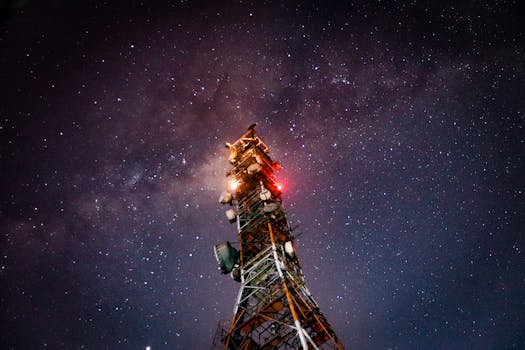
Starlink: Revolutionizing Global Internet Connectivity with Satellite Technology
Starlink is a satellite constellation developed by SpaceX, a private aerospace manufacturer and space transport services company founded by Elon Musk. The project aims to provide high-speed, low-latency internet connectivity worldwide, bridging the digital divide and transforming the way we communicate. With Starlink, SpaceX seeks to offer fast, reliable, and affordable internet services to underserved communities, remote areas, and even entire countries, promoting global connectivity and digital inclusion.
The Starlink constellation consists of thousands of small satellites in low Earth orbit (LEO), working together to provide a network of broadband internet services. Each satellite is equipped with advanced technology, including Hall effect thrusters, ion engines, and sophisticated software, to maintain orbit, communicate with other satellites, and transmit data to and from users on the ground. The satellites are designed to be compact, lightweight, and extremely efficient, allowing for a large number of them to be launched and deployed in a relatively short period.
How Starlink Works
To understand how Starlink works, it’s essential to delve into the technical aspects of the system. The satellites in the constellation are connected through a mesh network, which enables them to communicate with each other and with ground stations. This network allows data to be transmitted quickly and efficiently, reducing latency and increasing overall performance. The satellites use a combination of radio frequencies, including Ku-band and Ka-band, to transmit data to and from users, and they are designed to be highly resistant to interference and signal degradation.
Users access the Starlink network through a small, compact terminal, which is equipped with a phased array antenna and a modem. The terminal communicates with the satellites, transmitting and receiving data, and providing a high-speed internet connection. The terminal is designed to be easy to use, with a simple and intuitive interface, and it can be powered by a variety of sources, including solar panels or a battery.
Benefits and Applications of Starlink
Starlink has the potential to revolutionize the way we communicate, work, and live, offering numerous benefits and applications. One of the most significant advantages of Starlink is its ability to provide high-speed internet connectivity to underserved communities, remote areas, and developing countries, bridging the digital divide and promoting digital inclusion. This can have a significant impact on education, healthcare, and economic development, enabling people to access information, services, and opportunities that were previously out of reach.
Starlink can also be used to provide backup internet connectivity in areas where traditional infrastructure is damaged or destroyed, such as during natural disasters or conflicts. Additionally, the system can be used to provide connectivity for emergency responders, relief organizations, and other critical services, ensuring that they can stay connected and respond effectively in crisis situations.
Challenges and Controversies Surrounding Starlink
While Starlink has the potential to transform global internet connectivity, it also faces several challenges and controversies. One of the main concerns is the impact of the satellites on the environment, particularly in terms of space debris and light pollution. The large number of satellites in the constellation can contribute to the already significant amount of debris in Earth’s orbit, posing a risk to other satellites and spacecraft. Additionally, the satellites can reflect sunlight, causing light pollution and interfering with astronomical observations.
Another challenge facing Starlink is the regulatory environment, as the project must comply with a complex array of laws, regulations, and international agreements. The system must also address concerns around cybersecurity, data privacy, and intellectual property, ensuring that user data is protected and secure. Furthermore, the high cost of launching and maintaining the satellite constellation can be a significant barrier to entry, making it difficult for other companies or organizations to compete with SpaceX.